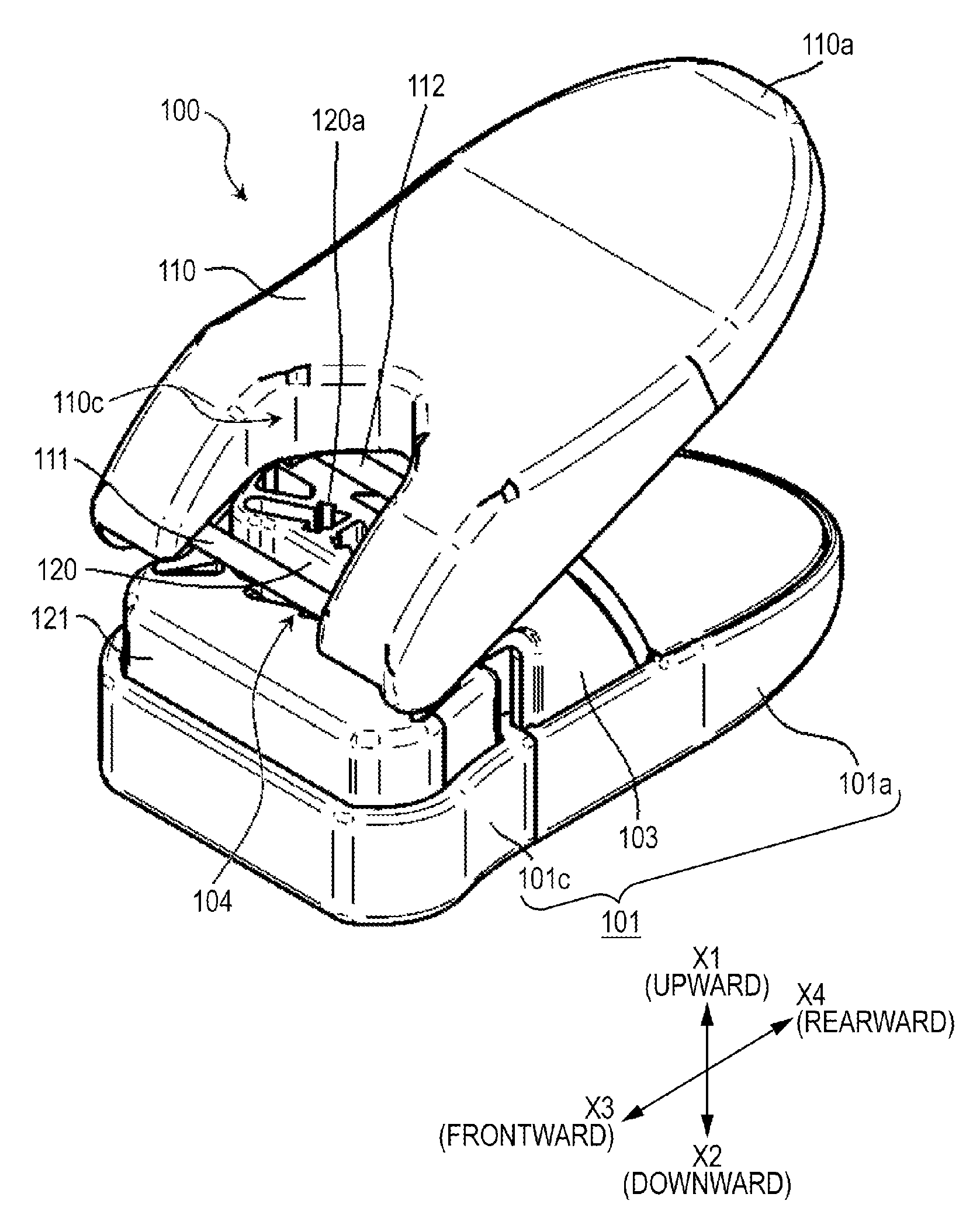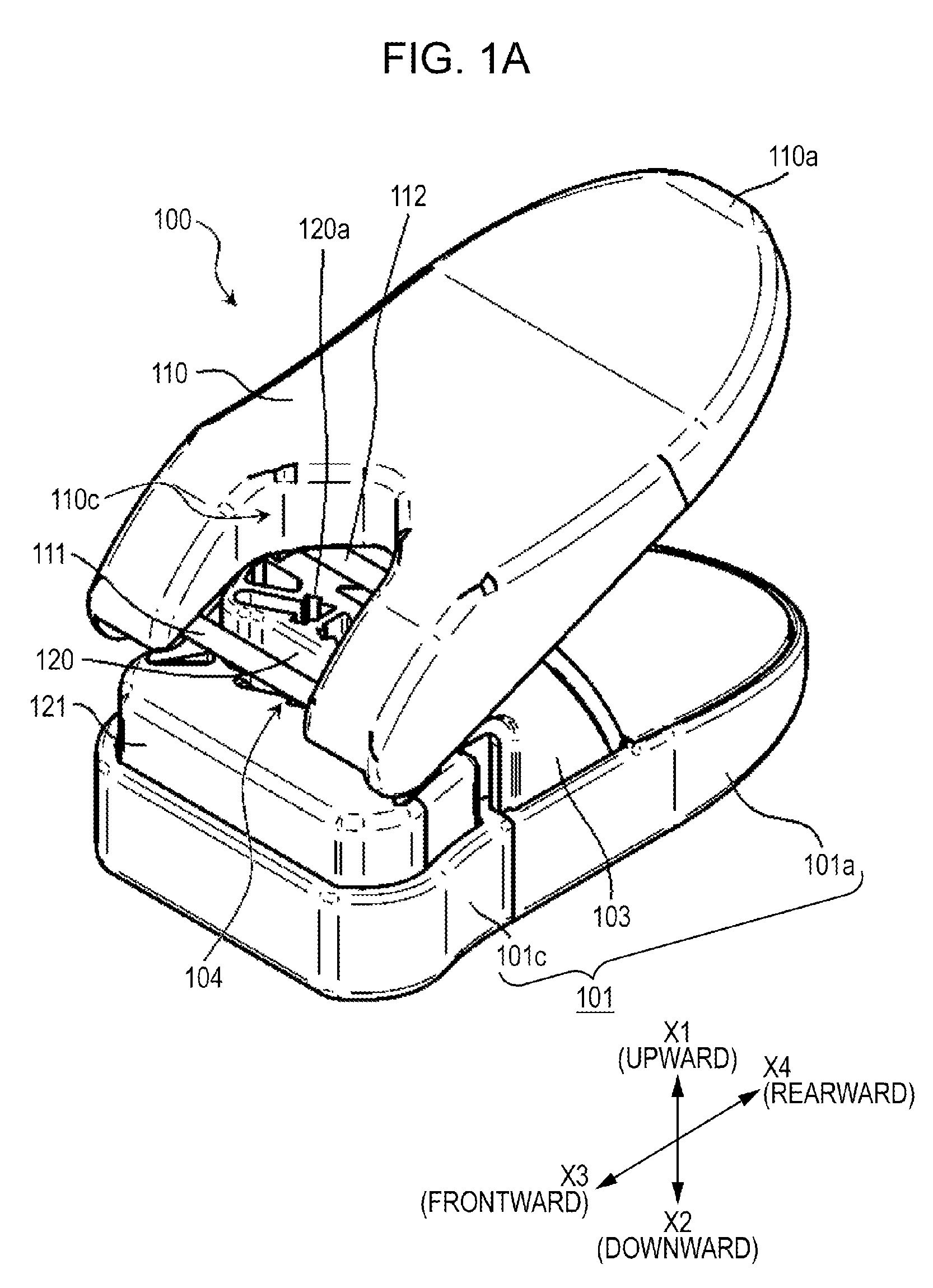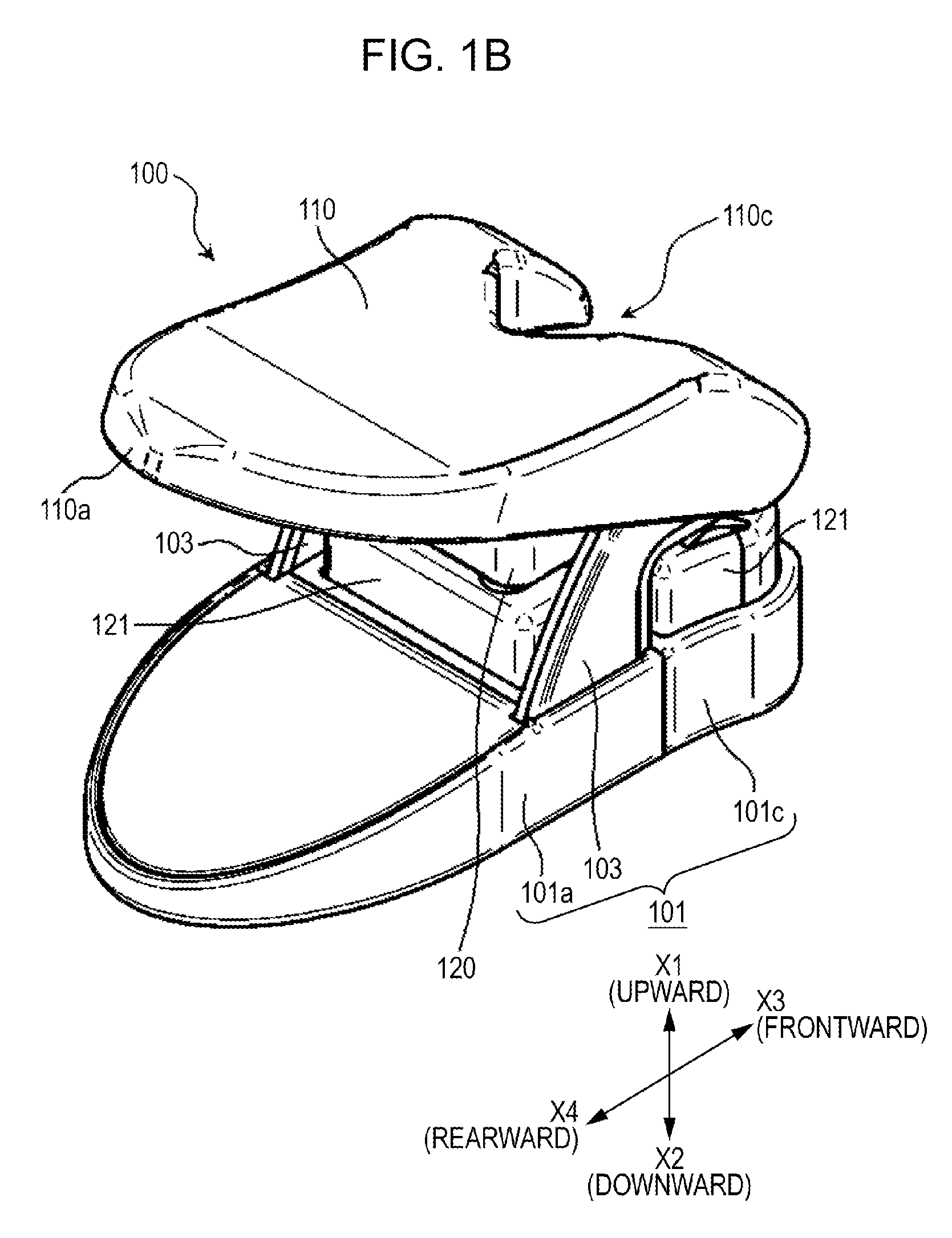Paper binder
a paper binder and paper binder technology, applied in the field of paper binder, can solve the problems of troublesome task of removing staples from bound paper sheets, risk of staples piercing fingers, etc., and achieve the effect of appropriate and convenient paper-binding process
- Summary
- Abstract
- Description
- Claims
- Application Information
AI Technical Summary
Benefits of technology
Problems solved by technology
Method used
Image
Examples
Embodiment Construction
[0047]The following is a description of one example of the present embodiment, with reference to FIGS. 1A-16. To ensure the clarity of the diagrams, in these diagrams, the paper sheets being bound are omitted.
[0048]An overview of the overall configuration of a paper binder 100 according to the present embodiment is described with reference to FIG. 1A, FIG. 1B, and FIG. 2. FIG. 1A is a schematic perspective view of the outer shape of the paper binder 100 viewed from the side of the insertion slot for paper sheets. FIG. 1B is a schematic perspective view of the paper binder 100 viewed from the side opposite to FIG. 1A. FIG. 2 is a schematic exploded perspective view showing the configuration of each part and an overview of the connections between each part in the paper binder 100. The paper binder 100 punches holes in one part of paper sheets using a pair of punch blades (123c; FIG. 2) without cutting away the part from the paper sheet. As a result, first, ligulate (or square-shaped) ...
PUM
 Login to View More
Login to View More Abstract
Description
Claims
Application Information
 Login to View More
Login to View More - R&D
- Intellectual Property
- Life Sciences
- Materials
- Tech Scout
- Unparalleled Data Quality
- Higher Quality Content
- 60% Fewer Hallucinations
Browse by: Latest US Patents, China's latest patents, Technical Efficacy Thesaurus, Application Domain, Technology Topic, Popular Technical Reports.
© 2025 PatSnap. All rights reserved.Legal|Privacy policy|Modern Slavery Act Transparency Statement|Sitemap|About US| Contact US: help@patsnap.com



